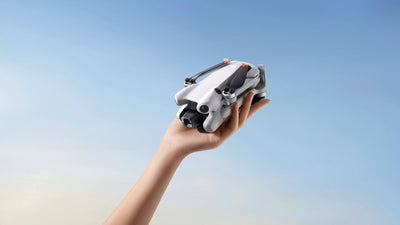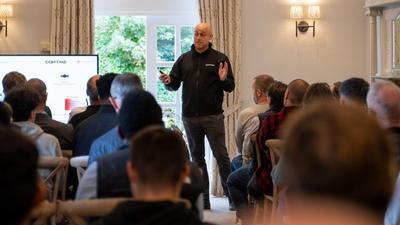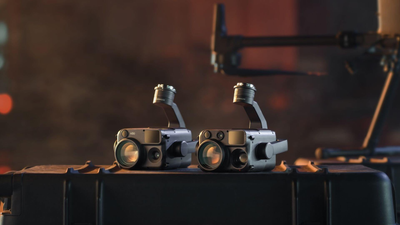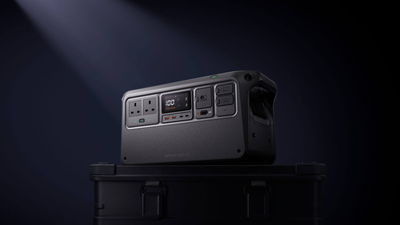How Weather Affects Drone Flight And Footage Quality
- by Stefan Gandhi
Drone enthusiasts understand that flying is as much about timing and planning as it is about equipment. One of the most influential, yet often underestimated, factors is the weather. For consumer drone pilots, understanding how various conditions impact both flight performance and footage quality is essential to capturing cinematic shots safely and effectively.
The Clear Skies Advantage
Calm, clear days with low wind speeds and good visibility are a drone pilot's best friend. These conditions ensure maximum GPS stability, strong satellite connection, and uninterrupted flight paths. More importantly, footage shot under clear skies often features sharp detail, balanced lighting and natural colours. For consumers focused on recreational photography, family videos or travel vlogging, clear skies provide the cleanest canvas for creative storytelling. Flagship models like the DJI Mavic 4 Pro thrive in these conditions, delivering professional-grade footage with minimal post-processing.
The Wind Factor
Wind is one of the most unpredictable elements to contend with. Light breezes are generally manageable for most consumer drones, especially models equipped with gimbal stabilisation and obstacle sensors. However, strong or gusty winds can dramatically reduce flight stability, drain batteries faster, and even displace your drone from its flight path.
For drones under 250 grams, like many beginner-friendly models, even moderate wind can pose a significant risk. These lighter craft struggle to maintain position, often leading to blurry footage, distorted horizon lines and erratic movement in video. The DJI Air 3S, with enhanced flight stability and precision control, provides a more confident flying experience in gustier conditions.
Rain and Drone Safety
Consumer drones are not typically waterproof. Flying in rain, drizzle or even heavy fog introduces real risks: water can infiltrate motors, compromise the battery and obscure camera lenses. Moisture on the lens can cause smearing and refraction artefacts, turning potentially beautiful scenes into unusable footage.
Moreover, water damage is rarely covered under warranty unless the drone is explicitly rated for wet conditions. As a rule, if it's wet enough to need a brolly, your drone should stay grounded. This is particularly crucial for family users and casual hobbyists who might not realise the extent of the risk until it's too late.
Cold Weather Challenges
Low temperatures are another stealthy saboteur. Lithium polymer (LiPo) batteries, the standard for most drones, perform poorly in the cold. Reduced voltage output means shorter flight times and a higher risk of mid-air power failure. Some drones may also struggle to calibrate IMUs (inertial measurement units) or compass sensors when subjected to rapid temperature changes.
Cold air can also lead to lens fogging or frost formation, particularly if your drone transitions from a centrally heated home to a frosty British morning. Footage captured in these conditions may appear dull, misty or discoloured.
To mitigate these effects, allow your drone to acclimatise before take-off, and pre-warm batteries if your drone model supports it. The DJI Mavic 4 Pro, with its intelligent battery management and robust construction, is well-equipped for stable cold-weather operation.
Heat and Humidity Effects
While it might seem safer than cold, excessive heat presents its own challenges. Overheating can lead to thermal throttling in processors and sensors, causing reduced responsiveness or image lag. High ambient temperatures also strain battery chemistry, which can inflate cells and shorten overall battery lifespan.
Humidity adds another layer of complexity. Moisture-laden air may not directly damage your drone, but it can increase the risk of lens fog, especially during sunrise or sunset shoots. This is particularly frustrating for drone users trying to capture golden hour magic only to find their footage washed out by haze.
Lighting Conditions
Weather impacts more than just flight safety; it directly shapes the quality of your footage. Overcast skies offer soft, diffused light that can eliminate harsh shadows and flatten contrast. This is ideal for evenly lit landscapes and portraits.
By contrast, direct midday sun can cause lens flare, overexposure and deep shadows. While some users may prefer the dramatic effect, others will find it harder to balance highlights and retain detail.
Golden hour, the period shortly after sunrise or before sunset, remains a favourite for its warm tones and low-angle lighting. However, it's often accompanied by low temperatures or dew, requiring careful equipment management.
Fog and Haze Risks
Visually, fog can add mystique and cinematic atmosphere to aerial footage. But from a technical standpoint, it impairs visibility, increases the likelihood of collisions and degrades signal transmission.
Drones reliant on visual positioning systems may struggle to stabilise if ground markers are obscured. Furthermore, damp air can accumulate on the camera housing or gimbal, leading to jerky motion or dulled visuals.
For footage-focused users, this condition requires a delicate balance between creative ambition and operational safety.
Conclusion
Smart flying begins with smart planning. Check local UK weather forecasts before every flight, and tailor your kit accordingly.
Explore our high-performance drones, including the DJI Mavic 4 Pro and DJI Air 3S, available now on the Coptrz official online store here.




